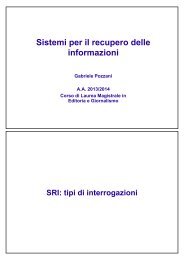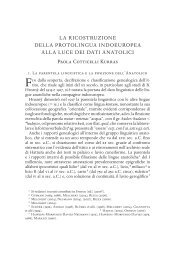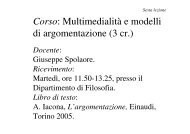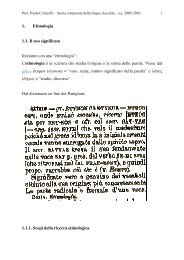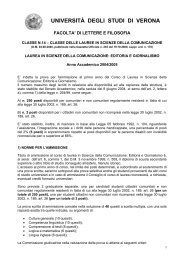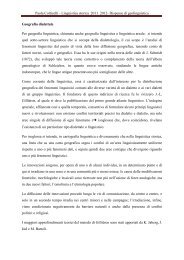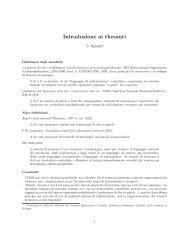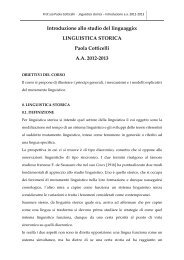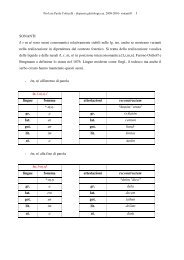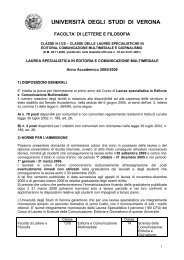inventario_fonematico_1213 (pdf, it, 193 KB, 12/11/12)
inventario_fonematico_1213 (pdf, it, 193 KB, 12/11/12)
inventario_fonematico_1213 (pdf, it, 193 KB, 12/11/12)
You also want an ePaper? Increase the reach of your titles
YUMPU automatically turns print PDFs into web optimized ePapers that Google loves.
©Prof.ssa Paola Cotticelli - dispensa glottologia / <strong>inventario</strong> <strong>fonematico</strong> aa. 20<strong>12</strong>-2013 <strong>11</strong>SONANTI/l r m n/ sono suoni consonantici relativamente stabili nelle lingue indoeuropee anche semostrano varianti nella realizzazione in dipendenza dal contesto fonetico. In posizioneinterconsonantica /l, r, m, n/ venivano realizzate come suoni vocalici o sillabici [ṃ, ṇ ṛ, ḷ].Furono Osthoff e Brugmann a definirne lo status nel 1876 attraverso la legge fonetica delle“sonanti”. Lingue moderne come l'inglese, il tedesco ma anche il serbo-croato, hannomantenuto questi suoni.Ai. Gr. Lat. Germ. L<strong>it</strong>. Sl. Air.*ṃ a a em un in in> ę an, en*ṇ a a en um im im>ę am, em- /ṃ, ṇ/ all'interno di parola interconsonanticoie. /-*ṃ-,-*ṇ-/lingue fonema attestazioni reconstructum*-ṃ-,-ṇ-,*kṃt-óm "cento"gr. a gr. (he)katónlat. en lat. centumgot. un got. hundl<strong>it</strong>.im l<strong>it</strong>. šimtasai. a ai. śatám- /m, n/ alla fine di parolaie. *ṃ, -*ṇ /lingue fonema attestazioni reconstructum*- ṃ, -ṇ *dekṃ, "dieci"gr. a gr. dekalat. em lat. decemgot. un got. taihunl<strong>it</strong>. im l<strong>it</strong>. dešim-tai. a ai. daśa



